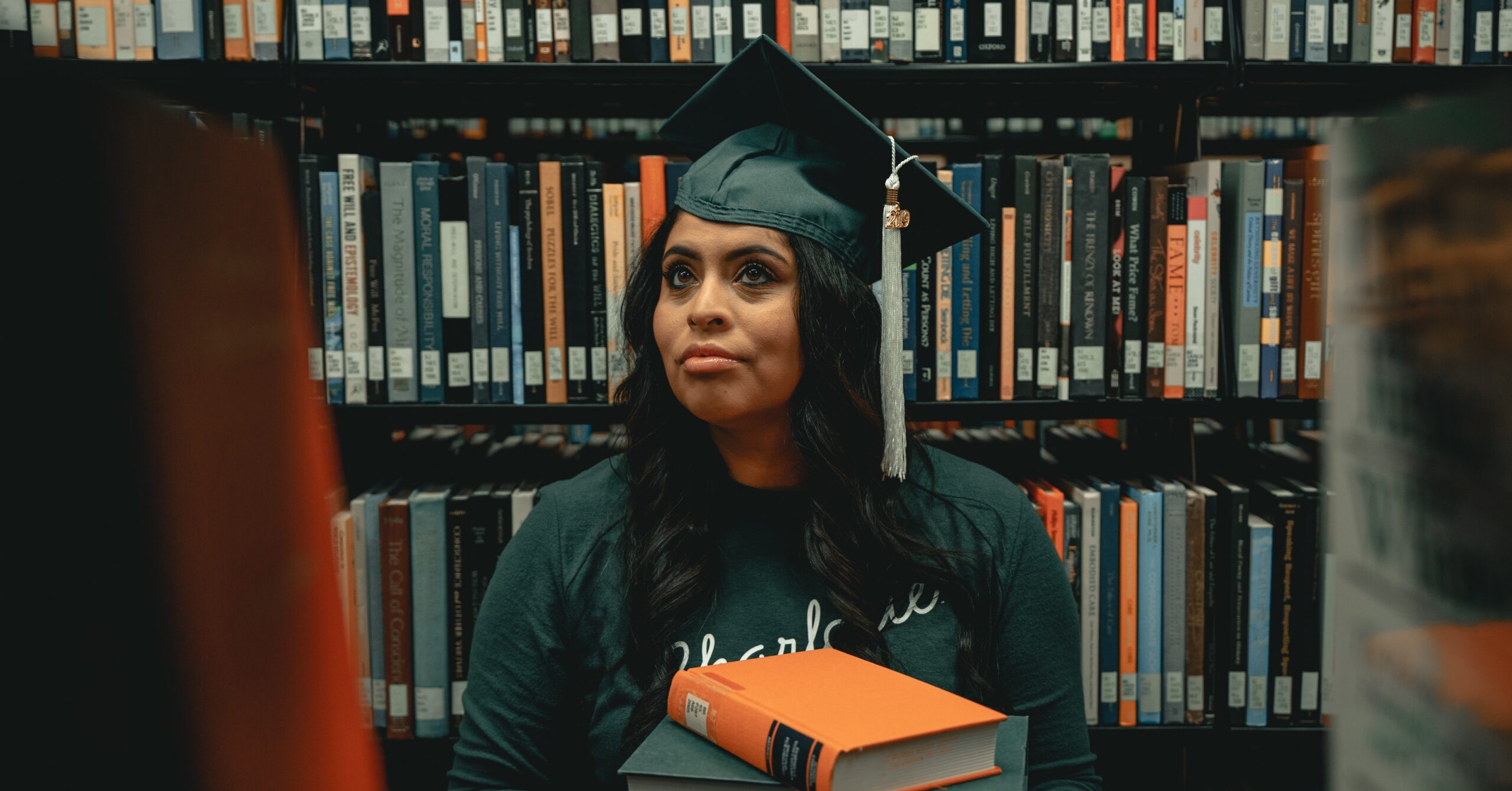
Why Work Experience Matters on MBA Applications
If you're hoping to submit your business school applications anytime [...]

Once you’ve decided you’re going to become a teacher, you still need to make many decisions about your future career. You have to decide where you’ll teach—so you can meet the licensure requirements of that state—and whether you’ll specialize in one subject or general ed. Most importantly, you have to decide what grade (or grades) you’ll teach.
It’s not an easy decision. There are pros and cons to working with all ages; the rewards of being a teacher at each grade level are deep and personal. Teaching is an extraordinarily tough job, but when you choose the right grade, something clicks.
“I loved teaching at the elementary school level, but junior high was different,” writes retired teacher Richard P. Morrall, who’d been warned about how awful teaching middle school would be but accepted a position anyway. “I was happier being with them at the school than being anywhere else. Monday became my favorite day because I got to return to my classroom. There is nothing I did with my junior high students which I did not enjoy. Classes, sports fields, campus, field trips, games, chaperoning, club sponsorships, car washes, picnics, special activity days—all of it.”
Teachers at every grade level can have a profound impact on not just what and how their students learn but also on their lives. You can make a difference whether you specialize in early childhood education, become an elementary school teacher, become a middle school teacher, or become a high school teacher. There’s no one right or wrong choice, just the choice that’s best for you.
In this article, we help you answer the question what grade should I teach? and cover the following:
In some ways, teachers across grade levels have a lot in common when it comes to the average day. Nearly all teachers get up and out of the house early because they need to be at work ahead of students to prepare. Prep time is built into teaching schedules in elementary school, middle school, and high school, but it seldom feels like enough. All teachers are responsible for classroom management, creating lesson plans, and student assessment. And most teachers work at least 50 hours per week, including more than 400 hours of overtime each school year that’s essentially unpaid.
On the other hand, how much time teachers spend on any given task can vary considerably by grade. Consider a first-grade teacher. Before students arrive, they might prep supplies for the day’s hands-on activities, take out the day’s circle time books, answer emails from parents and colleagues, and set up the morning’s lesson on the smartboard. When the bell rings, they escort their students to the classroom and give them whatever assistance they need as they stash coats in cubbies, take homework out of folders, and put away backpacks. Getting the class settled can take a surprisingly long time. Children may only complete a few brief lessons before it’s time for a snack and a short recess (which can mean getting everyone zipped back into their coats). After another quick lesson, it’s time for lunch, so the teacher must get the kids lined up and to the lunchroom. At that point, the teacher can eat their lunch, finally use the restroom, tidy up the classroom, answer more emails, and prepare for the afternoon. If the class has a “special” like art or gym after lunch, the teacher might mark student assignments, work on future lesson plans, or attend a meeting. At the end of the day, the teacher helps the class pack up for dismissal and walks students out to the pick-up area before going back inside to continue working.
A high school teacher doesn’t have to help their students walk to the lunchroom or blow their noses, but that doesn’t mean they have an easier day. Adolescents can be just as hyper and disruptive as first graders—or much more sullen and disinterested, which can be worse when the goal is to keep students engaged. At the start of any given day, the high school teacher is prepping for not one but multiple classes populated by students in multiple grades. While they may not have a class to teach every period, they still have plenty to do. In between every class and after the end-of-day bell rings, the teacher reads essays and grades exams, goes to meetings with department heads, works on upcoming lessons, answers emails, and holds office hours. If they are sponsoring a student club or activity that year, they might spend some of those “off” periods or after-school hours supervising club meetings, hosting independent study sessions, or running rehearsals.
Don’t make the mistake of assuming that one grade is easier just because teachers in different grades do different things. Teachers across grade levels put in more work than most people realize.
| University and Program Name | Learn More |
|
New York University:
Master of Arts in Teaching
|
|
|
Merrimack College:
Master of Education in Teacher Education
|
Answering this question is complicated because licensure requirements for teachers differ from state to state. Teachers in all 50 states must hold bachelor’s degrees, but a few also require teachers to have master’s degrees in education. Some states require teachers to complete specific state-mandated education programs, take national and state teacher readiness exams, and complete a set number of supervised fieldwork hours before they are eligible for licensure. The easiest way to determine the requirements for teachers at each grade level in your state is to reach out to the Department of Education.
Kindergarten teachers and elementary school teachers typically have bachelor’s degrees in education and one to three years of supervised classroom experience before launching their teaching careers. Middle school teachers may major in education and minor in their area of interest before completing a supervised fieldwork experience and sitting for content-area exams. High school teachers often earn a bachelor’s degree in their subject area and then complete a teacher preparation course in place of another degree.
Master’s degrees for teachers are often concentration-based, with specializations focused on grade level, subject area, student population, or all three. You might get a Master of Arts in Teaching or a Master of Education in Elementary Education or specialize in elementary science education, elementary literacy, or special education instruction at the elementary level. There are also MAT and MEd programs for middle grades teachers and for teachers who teach at the high school level. Some high school teachers get master’s degrees in the subjects they teach.
Some sources define early childhood education as the branch of education concerned with everything related to teaching and learning that happens before kindergarten. Others expand the definition to include first grade, second grade, and even third grade. Regardless of how you define it, however, this period is hugely important in children’s lives.
Children learn how to learn during these early childhood years; early childhood teachers and pre-K educators are particularly important because they set the stage for their students’ later education. That isn’t all they do, however. According to the United Nations Educational, Scientific and Cultural Organization, early childhood education “is more than preparation for primary school. It aims at the holistic development of a child’s social, emotional, cognitive, and physical needs to build a solid and broad foundation for lifelong learning and wellbeing. ECCE can nurture caring, capable, and responsible future citizens.”
Teachers who choose early childhood education as a specialization often enjoy working with little kids, tend to be extraordinarily patient and good-natured, and may be drawn to this area of teaching because they want to make the most significant possible impact on their students’ futures.
There are upsides and downsides to becoming an elementary school teacher. Among the pros: young children are enthusiastic learners who provide teachers numerous opportunities to be creative in the classroom. Silliness is encouraged between 1st grade and 5th grade. Because elementary school teachers handle everything from reading to science to social studies, every day is different. Teachers spend their days with the same group of kids all year and get to form close bonds.
On the downside, elementary school teachers—especially in the younger grades—have to be extra patient, extra cheerful, and not too picky about personal space. They’re expected to be crafty and have a cute classroom while also doing what can amount to more lesson planning than secondary school teachers.
“In my district, the middle school and high school teachers get a planning period every day, we only get two or three a week,” writes first-grade teacher Tammy McKracken. “We also have to prep for many, many subject areas. Whereas a middle/high school teacher usually teaches the same class several periods each day; I need to teach a math, a reading, a writing, a social studies, a science, a phonics, a character development, and sometimes even an art lesson, every single day!”
It can be helpful to look at elementary education as two distinct fields. Teaching in grades one through three is very different from teaching in grades four and five. In the former classrooms, students usually need more hands-on help but are typically open-minded, enthusiastic, and kind to one another. In the upper elementary grades, students begin pushing more boundaries, and many are on the cusp of adolescence, but they’re also more independent and very passionate about their favorite subjects. Unfortunately, you may not always be able to choose whether you’re assigned to a first-grade or a fifth-grade classroom. It’s not uncommon for schools to ask teachers to transfer between grades, so you may need to keep an open mind about what grades you’re willing to teach.
Teaching in middle school and teaching high school is hard. Your students are still technically children, but those children can have all kinds of adult-size problems, fears, and traumas. You may see the same students week in and week out, but you’ll never know which personalities they’ll wear on any given day. Your students will be intelligent, engaged, and motivated. They will also be rebellious, quick to anger, and unruly. If you become a high school teacher, you’ll be responsible for ensuring that students meet not only state testing standards but also the basic admissions requirements of colleges and universities. You may be the only adult in some students’ lives who encourages them to dream big… or recognizes signs of abuse, neglect, and drug addiction.
But it’s not all bad! “I personally love the independence and (relative) maturity of the high school students, and being able to focus on my primary area of interest,” writes high school teacher Carter McClung. The very best thing about teaching middle schoolers and high schoolers may be that you can share what you’re passionate about with a population of students who are exploring the interests that will shape the rest of their lives.
Lots of teachers switch between grade levels. Some even enjoy it and find that working with different age groups has made them better teachers. When you move from upper grades to lower grades, you have a stronger sense of what you need to do to prepare students for the material in later grades. When you move from an elementary school classroom into a middle school or high school classroom, you’ll benefit from the knowledge you’ve gained about how children develop and the early experiences that shape how they learn.
Being able to teach different grades can also make you a more valuable employee. You’ll be able to transition between districts more easily, and the breadth of your experience may help you stand out from the crowd when you’re looking for work. Being flexible enough to move between grades can also help you stay employed when your school’s needs change.
That said, successfully moving between grades isn’t easy. “It’s a rare teacher than can teach well K through 12,” writes teacher Sarah Matthews. “It’s a bit less rare to see a teacher who can teach 1st through 8th with equal skill and comfort, but I’ve seen that, too. I’ve seen high school teachers teach 8th reasonably well, but in 6th those same high school teachers can’t find their mark. Conversely, I’ve seen elementary teachers try to teach a group of high schoolers how to conduct themselves when they do ‘book buddies’ with the little ones, and those same excellent elementary teachers cannot command the attention of jaded high schoolers.”
There’s also research that suggests that grade switching can lead to worse outcomes in students because grade switchers don’t see the same year-over-year skill improvements that teachers who stick with a single grade usually see. One study found that second graders assigned to a teacher switching from another grade lost the equivalent of about 42 to 50 days of instruction. When those students moved on to third grade, they were still behind.
It can be tempting to look at teacher salaries when you’re trying to decide which grade to teach, but that’s not a great metric because there’s not as much variation in salaries across grades as most people assume. Kindergarten teachers and elementary school teachers earn about $61,620. Middle school teachers earn about $61,810. High school teachers earn about $62,360. You can earn big money as a first grade teacher in a private school in an affluent area or barely scrape by as a high school teacher in an underfunded public school.
Chances are you already have a good idea of which grade you’d like to teach, but keep an open mind. You might discover that teaching a different grade level is rewarding in ways you could never have anticipated. Some teachers really enjoy interacting with lots of students from lots of different grades. Some are only passionate about teaching because they get to share their areas of interest. Others love the enthusiasm of younger students and being able to teach a little bit of everything. Consider whether you’d rather teach someone to read or guide them as they read a novel—those are two very different things.
Most teacher preparation programs recommend taking the time to explore your options. That’s excellent advice. Look for opportunities to visit classrooms and shadow teachers in specific grade levels. Reflect on your interests and what kind of impact you want to have on your students’ lives. Do a few job searches to see where the teaching jobs are in your area. And finally, know yourself. Do you like spending time with teenagers, or do you find them intimidating? Do you have the energy to keep up with 20 eight-year-olds, or does the very idea sound exhausting? The more consideration you give these and other questions, the more likely it is that you’ll discover the grade you were meant to teach.
This article was originally published in 2018. It has been updated in 2024 to reflect the most recent data on the subject.
Questions or feedback? Email editor@noodle.com

If you're hoping to submit your business school applications anytime [...]

Even in states where a master's degree isn't required, teachers [...]

Getting an MAT or an MEd in Elementary Ed can [...]

The best-paying jobs in software engineering are also, unsurprisingly, the [...]

As a math teacher, you may qualify for higher pay [...]
Categorized as: Teaching, Education & Teaching